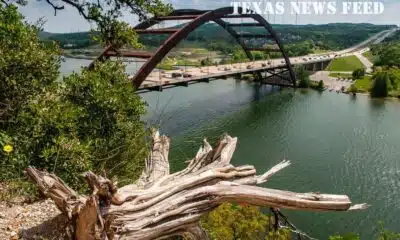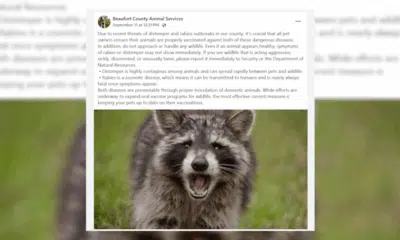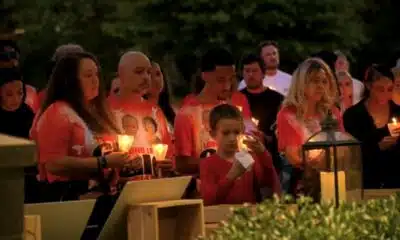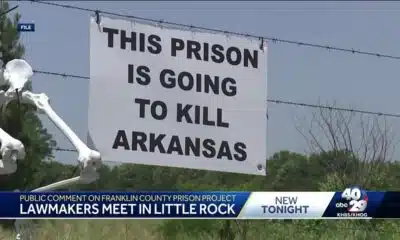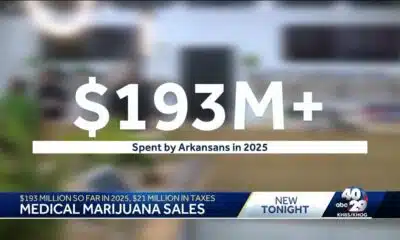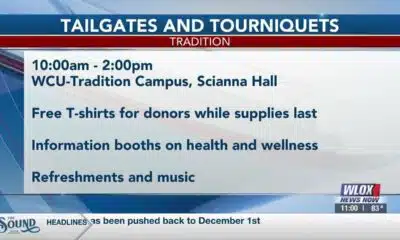News from the South - Missouri News Feed
Trump’s cuts to federal wildfire crews could have ‘scary’ consequences
Trump’s cuts to federal wildfire crews could have ‘scary’ consequences
by Alex Brown, Missouri Independent
February 18, 2025
ISSAQUAH, Wash. — President Donald Trump’s moves to slash the federal workforce have gutted the ranks of wildland firefighters and support personnel, fire professionals warn, leaving communities to face deadly consequences when big blazes arrive this summer.
“There’s going to be firefighters that die because of this, there will be communities that burn,” said Steve Gutierrez, a union official who served 15 years as a firefighter with the U.S. Forest Service.
Gutierrez now serves as a labor relations representative with the National Federation of Federal Employees, which represents government workers. He said thousands of wildland firefighters have had their jobs thrown into limbo by Trump’s government-wide hiring freeze.
Brian Fennessy, chief of the Orange County Fire Authority and president of the California Fire Chiefs Association, echoed that concern. “The public needs to know they’re at risk,” Fennessy said. “If the public knew all of this, they would lose their minds.”
Federal agencies depend on an army of seasonal firefighters to fill their ranks during the months when wildfires are most active. Scott, a Forest Service firefighter with six years of experience in the Western United States, who asked to be identified by a pseudonym to avoid retaliation, is among those whose role has been thrown into uncertainty.
“It’s just going to be a disaster for the wildfire response this season,” he said.
Scott was slated to move to a new Forest Service fire station this spring. But following the federal hiring freeze, he was told by his captain that it’s unclear whether his new job still exists. Thousands of his colleagues are in a similar state of limbo.
In a statement to Stateline, the Forest Service said wildland firefighting jobs are considered public safety positions that are exempted from the hiring freeze, and the agency is working with the federal Office of Personnel Management on those positions. The agency did not respond to follow-up questions about the number of unfilled positions under review.
The U.S. Department of the Interior and Bureau of Indian Affairs did not grant Stateline interview requests.
Federal agencies employed more than 17,000 wildland fire staffers last year, many of them in seasonal roles. This year, many of those workers had job offers rescinded — or had their transfers and promotions put on hold — just as they were set to begin onboarding and training for the 2025 fire season.
Trump’s efforts to cut the federal workforce are led by his newly created commission dubbed the Department of Government Efficiency, helmed by billionaire Elon Musk, the world’s richest man.
Aside from the hiring freeze, the Forest Service fired an additional 3,400 staffers this week, many of whom provided critical support for wildfire operations. Meanwhile, Trump’s freeze on federal spending has cut off funding for projects such as prescribed burns to reduce future risk. Wildfire officials offer mixed reports on whether that funding has been restored in the wake of judicial rulings.
“We are watching a valuable [federal] partner in wildland fire suppression go into this fire season unnecessarily handicapped,” said Thomas Kyle-Milward, wildfire communications manager with the Washington State Department of Natural Resources. “That’s concerning.”
States, tribes and fire chiefs are all watching the situation closely. Officials say they’re preparing for a fire season in which they may have minimal federal support. While they plead with Trump to reverse course quickly, they fear much of the damage may be irreversible. Many wildland fire officials noted that seasonal workers will likely move on to other jobs if their position with a federal agency is in doubt.
“If there’s not enough federal firefighters, that affects everybody in the state,” said Jake Rhoades, fire chief of Buckeye Fire-Medical-Rescue Department in the Phoenix suburbs and president of the Arizona Fire Chiefs Association. “That’s scary for me.”
Rhoades and others noted that firefighters need significant training and qualifications to fill leadership positions. Trump’s actions have delayed that onboarding process. As a result, engine crews could be grounded this summer because they don’t have a certified leader, or teams could be sent into harm’s way without the proper training.
The federal role
Wildland fire response in the U.S. is a collaborative effort shared by a variety of entities, from tiny local fire districts to massive federal agencies. In Western states especially, the feds play a crucial role. Agencies manage a vast landscape of national forests, national parks and Bureau of Land Management parcels. The Bureau of Indian Affairs also provides wildfire response on tribal reservations.
While state agencies have invested heavily in their own wildfire crews, they say the federal agencies are critical partners.
“If they’re unable to fill the majority of their positions, it would have an impact on everybody this summer,” said Vaughn Jones, wildland fire management section chief with the Colorado Department of Public Safety. “We have to partner with them every day of every fire season.”
Trump’s orders have thrown those agencies into chaos.
“I hear it multiple times a day from folks who are applying for jobs, from folks who are trying to fill positions, and they’re all getting stymied,” said Bobbie Scopa, executive secretary with Grassroots Wildland Firefighters, a nonprofit that advocates for federal staffers. “These folks are worried about their families and paying the mortgage, and they’re worried about their physical safety if they’re going to be responding to fires with a crew that’s not staffed up all the way.”
Federal firefighters corroborated that account.
“They’re saying there’s this public safety exemption, and that’s a blatant lie, because I’m a wildland firefighter and my job has been frozen,” said Scott, the Forest Service employee.
Scott said many of his colleagues were among the 3,400 Forest Service employees fired last week. While the agency said those cuts do not include firefighters, wildland fire experts note that many staffers in other roles hold wildfire certifications and serve on the line during fire season. And nearly all of them play critical support roles for the agency’s wildfire response.
Another Forest Service firefighter, who asked to remain anonymous, said the cuts to his unit included an aviation manager who supervised helicopter contracts and crews, as well as mapping specialists who provided key information to wildfire crews.
“There’s going to be days where we can’t call a helicopter because of staffing,” he said. “From a mapping perspective, our intelligence-gathering is going to be really affected by losing those people.”
Scott said he’s begun applying for other jobs, but is still holding out hope he can stay with the Forest Service. But he said many other firefighters will have moved on by the time the feds get their act together.
A wildfire planner in a Western state, who asked to remain anonymous to avoid retaliation, said the impacts of Trump’s cuts will be felt long beyond this fire season.
“This could end up costing us a generation of firefighters,” he said. “They think a two-month delay doesn’t mean anything, but people get laid off and they find other work. This is a very specific skillset, and there ain’t many people in this work.”
Officials at all levels say that recruitment and retention of firefighters is already a major challenge. Wildland fire workers must accept unsteady seasonal positions, with grueling hours and exposure to dangerous conditions and cancer-causing smoke. Many suffer from mental health issues as a result. And the profession’s paltry salaries, experts say, rarely match the demands.
Contingency plans
State and local leaders say they’re still working to make sense of the federal chaos. In Nevada, where 86% of the land is managed by federal agencies, the turmoil could have an outsized impact.
“Obviously, we’re a little nervous right now,” said Kacey KC, the Nevada state forester and fire warden. “We’re putting contingency plans in place for emergency hires for fire season, if need be.”
KC said a loss in federal support would be a huge blow to Nevada’s wildfire response efforts. As the state works to staff up its own crews, it has seen an increase in applicants from federal agencies, perhaps indicating that the uncertainty is driving Forest Service and BLM employees to other jobs.
In Arizona, officials say they plan to lean on an interstate compact that allows them to share resources with Colorado, Kansas, Nebraska, New Mexico, North Dakota, South Dakota, Wyoming and the Canadian province of Saskatchewan. Jones, the Colorado official, said such agreements could be essential this year.
“If [federal support] is diminished, those compacts and the states finding ways to make things happen will be critical,” he said.
Nevada is one of the few states that has not signed onto a wildfire compact. KC said she’s pushing lawmakers to authorize the state to join such agreements.
In Washington state, the Department of Natural Resources is planning to meet with regional Forest Service leaders to assess what adjustments they may have to make.
“Are the feds able to field an adequate number of firefighters that they can cover their jurisdiction within Washington state?” said Kyle-Milward, the DNR official. “We’re concerned that they won’t.”
In recent years, the state has invested heavily in its own response, staffing up to 700 firefighters, in an effort to become less dependent on federal agencies.
Tribal nations are also trying to make sense of the situation. The federal Bureau of Indian Affairs employs thousands of firefighters that respond to fires on tribal lands. And many tribes staff their own wildfire crews using federal funding that’s now in doubt.
For the Confederated Tribes of the Colville Reservation, in northeast Washington state, it’s unclear whether they’ll be able to hire the seasonal firefighters they rely on during wildfire season.
“It’s definitely a touch-and-go situation right now,” said Chairman Jarred-Michael Erickson. “We’re hoping to get answers sooner than later. I really hope they’re looking at this, because wildfire season comes really quick and if you’re not prepared…”
In 2023, wildfires burned more than 57,000 acres on the Colville Reservation.
Prevention work
Trump’s freeze on federal spending is another major concern for wildfire professionals. In Washington state, for instance, officials have lost access to more than $200 million in wildfire preparedness funds, the Seattle Times reported. That money was intended to help agencies purchase equipment, train local departments, plan evacuation routes and conduct fuels reduction projects like prescribed burns to reduce risk.
Wildfire experts say the Inflation Reduction Act and infrastructure law passed under President Joe Biden made significant investments in projects to improve forest health and prevent out-of-control megafires. Trump has attempted to block those grants.
“If we’re not able to do that in certain areas, then the fuel load is going to be impacted, and that increases the possibility of the magnitude of some of these fires,” said Rhoades, the president of the Arizona Fire Chiefs Association.
The Western wildfire planner, who asked to remain anonymous, said the funding freeze is threatening projects to improve the safety of local communities.
“[Trump] is driving the wildfire prevention train off the rails,” he said. “I’m hoping that this year is not the year that the big fire shows up in my neighborhood.”
In California, leaders have not yet seen a cutoff in federal money to support wildfire projects, said Patrick Wright, director of the California Wildfire and Forest Resilience Task Force, a coalition of state and federal agencies. He noted that the state has committed billions of its own funds to ensure the work continues.
Wright said the state expects to retain a strong partnership with federal land management agencies. But he noted that the recent firings of thousands of federal staff would impact the pace of their work.
“It will slow things down,” he said. “We’re all facing shortages in workforce across the board. Clearly, losing more of that workforce is going to have an impact.”
Stateline is part of States Newsroom, a nonprofit news network supported by grants and a coalition of donors as a 501c(3) public charity. Stateline maintains editorial independence. Contact Editor Scott S. Greenberger for questions: info@stateline.org.
Missouri Independent is part of States Newsroom, a nonprofit news network supported by grants and a coalition of donors as a 501c(3) public charity. Missouri Independent maintains editorial independence. Contact Editor Jason Hancock for questions: info@missouriindependent.com.
The post Trump’s cuts to federal wildfire crews could have ‘scary’ consequences appeared first on missouriindependent.com
News from the South - Missouri News Feed
Luke Altmyer scores 3 TDs, No. 9 Illinois shuts out Western Michigan, 38-0
SUMMARY: No. 9 Illinois defeated Western Michigan 38-0, extending its winning streak to seven games, the longest since 2011. Quarterback Luke Altmyer threw two touchdowns and ran for another, while Kaden Feagin rushed for 100 yards and a touchdown. Illinois’ defense made critical stops, preserving the shutout despite only leading 10-0 at halftime. Coach Bret Bielema expressed frustration at the team’s slow start. Illinois remains turnover-free this season and has outscored opponents 128-22 in three games. Their next challenge is Big Ten play against No. 22 Indiana. Western Michigan starts MAC play next week against Toledo.
The post Luke Altmyer scores 3 TDs, No. 9 Illinois shuts out Western Michigan, 38-0 appeared first on fox2now.com
News from the South - Missouri News Feed
Panic and chaos at a St. Louis area mall false reports of shots fired
SUMMARY: Panic erupted at West County Center mall in the St. Louis area Saturday around 2:30 p.m. after a false report of shots fired in the food court. Police arrived quickly but found no active shooter. The confusion stemmed from a fight where a chair was thrown, causing fear among shoppers. Maya Emig, separated from her family, was comforted by strangers during the chaos. Traffic snarled as parents tried to reach their children. The incident, amid recent nationwide gun violence, heightened fears but no arrests were made. Authorities confirmed no guns were involved and no charges will be filed.
A fight near the food court where a chair was thrown at a victim caused some confusion, which then turned into panic and chaos amid rumors of an active shooter.
News from the South - Missouri News Feed
UTVs, ROVs may soon be allowed on Wentzville streets
SUMMARY: Wentzville’s Board of Aldermen voted 4-2 to allow utility terrain vehicles (UTVs) and recreational off-highway vehicles (ROVs) on city streets under conditions similar to golf cart rules. Use would be limited to subdivisions with speed limits of 25 mph or less, requiring valid licenses, insurance, and safety features. However, Mayor Nick Guccione vetoed the ordinance, citing safety and enforcement concerns, supported by residents and officials. The Board may override the veto on September 24. Supporters emphasize personal responsibility, while opponents worry about public safety. Enforcement challenges exist, especially regarding underage drivers. Missouri law permits municipalities to regulate such vehicles locally.
Read the full article
The post UTVs, ROVs may soon be allowed on Wentzville streets appeared first on fox2now.com
-
News from the South - Arkansas News Feed7 days ago
Group in lawsuit say Franklin county prison land was bought before it was inspected
-
News from the South - Kentucky News Feed6 days ago
Lexington man accused of carjacking, firing gun during police chase faces federal firearm charge
-
The Center Square6 days ago
California mother says daughter killed herself after being transitioned by school | California
-
News from the South - Arkansas News Feed6 days ago
Arkansas medical marijuana sales on pace for record year
-
Local News Video6 days ago
William Carey University holds 'tailgates and tourniquets' blood drive
-
News from the South - Alabama News Feed6 days ago
Zaxby's Player of the Week: Dylan Jackson, Vigor WR
-
News from the South - Missouri News Feed6 days ago
Local, statewide officials react to Charlie Kirk death after shooting in Utah
-
Local News6 days ago
US stocks inch to more records as inflation slows and Oracle soars







